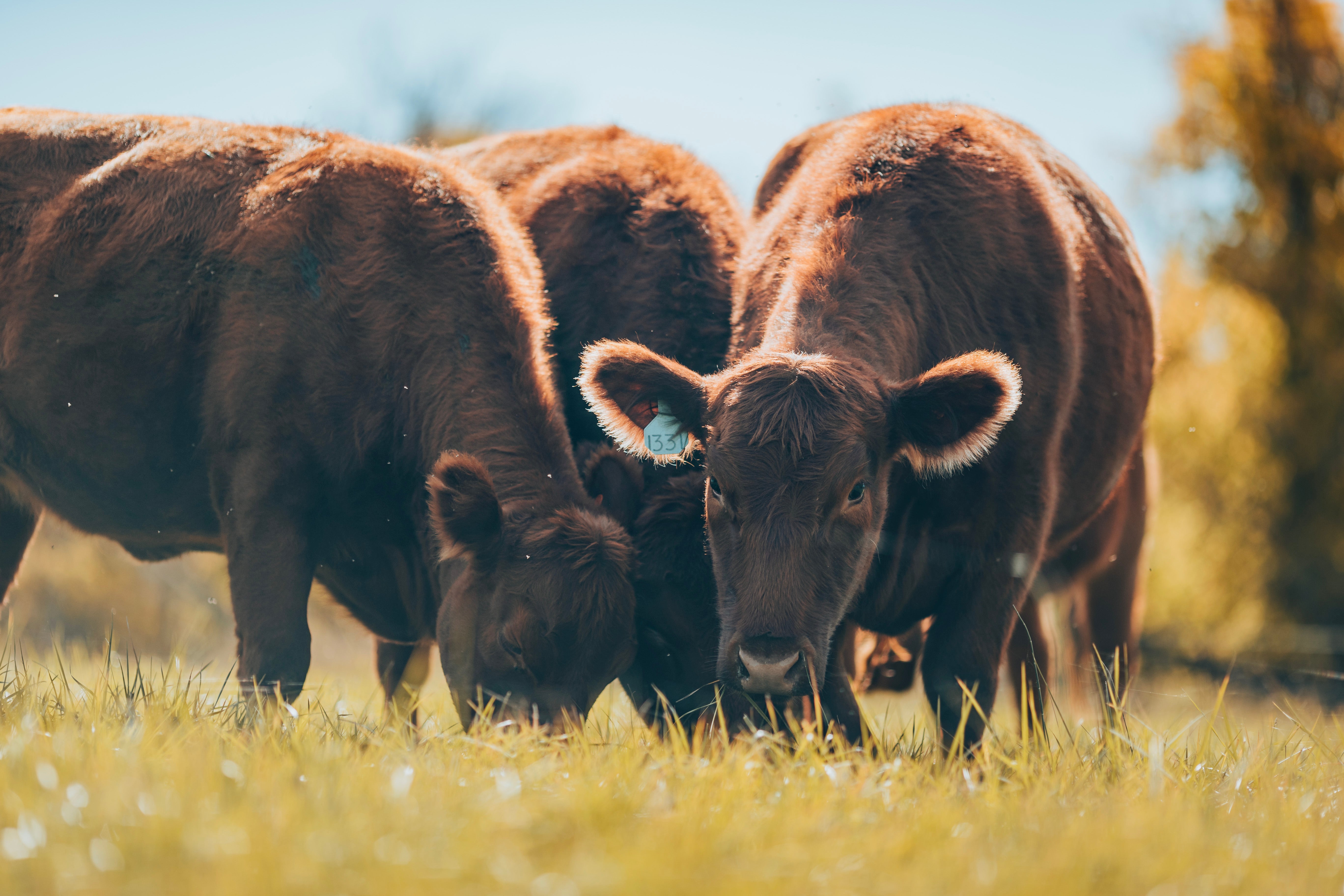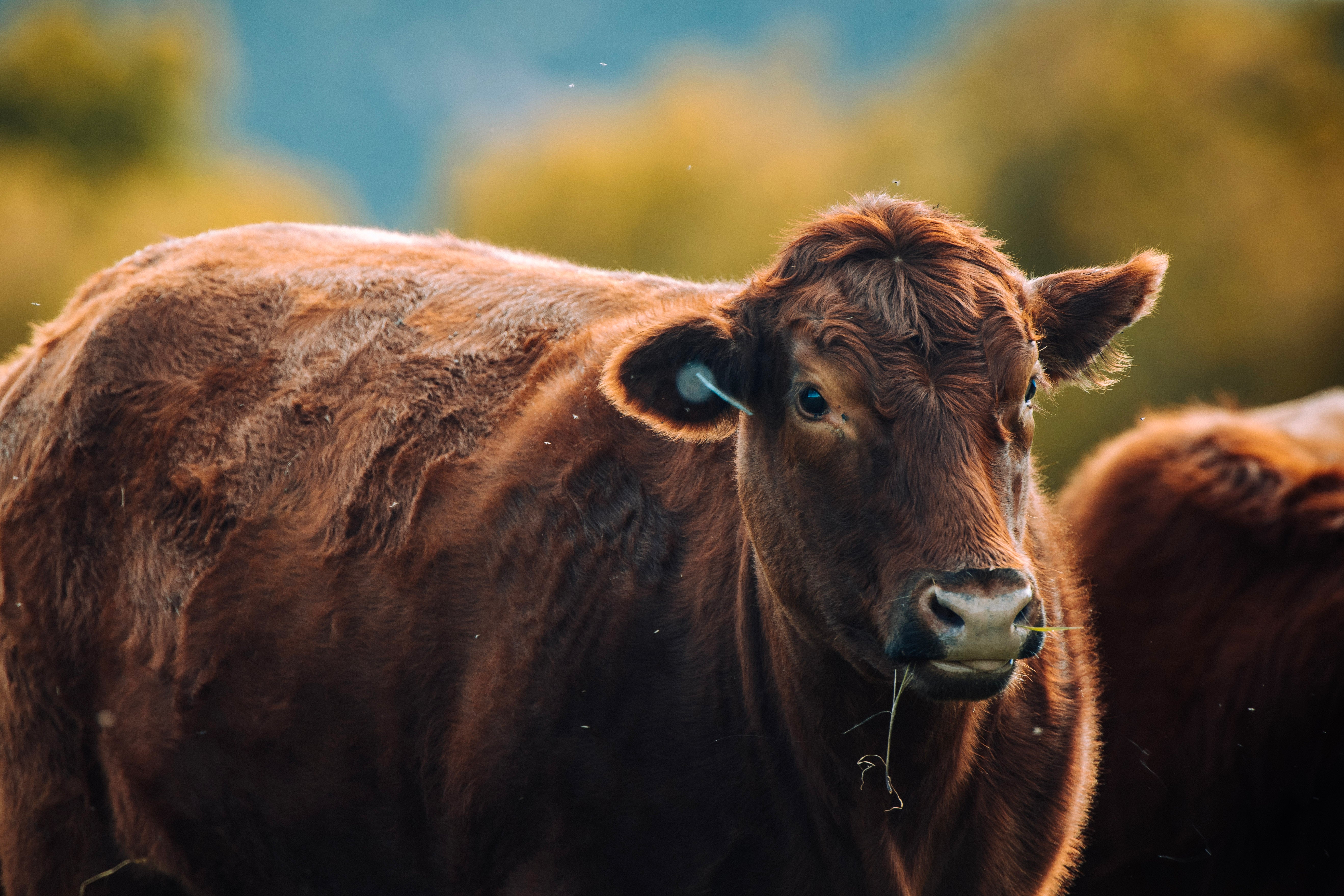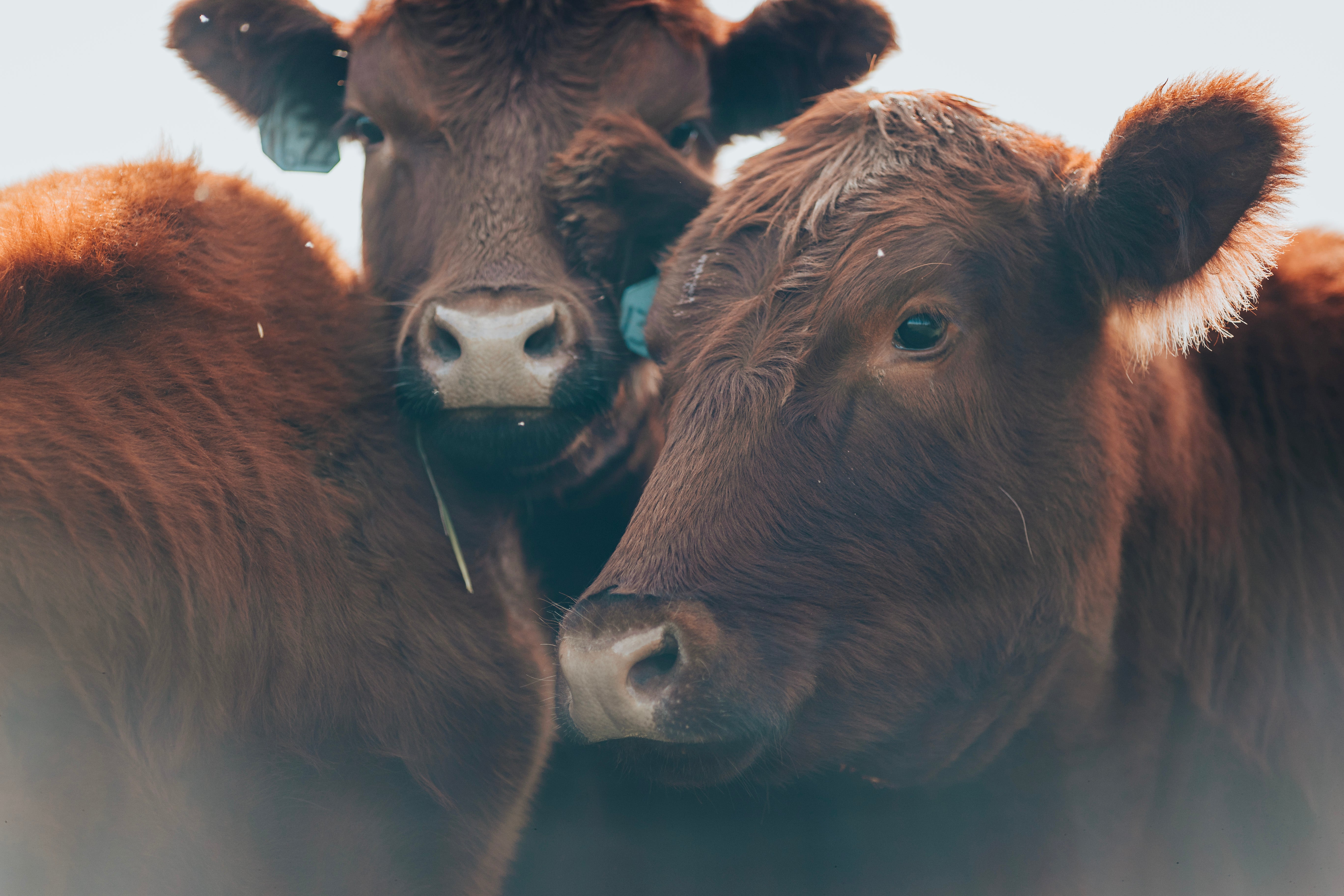
The Difference Between Grass-Fed and Grass-Finished Beef and Why You Should Care
If production claims give you anxiety, you are in the right place. Most foods should come with a “misinformation” warning label. For example, products marked as health foods aren’t always healthy, diet fads often harm your body more than help, and the amount of production claims is so overwhelming that it seems the food industry wants to confuse buyers. Even the food pyramid you learned in grade school has recently been debunked.
Why can’t we have real, uncomplicated food?
At Lazy T Ranch, we raise all-natural beef using a specific cattle program. We believe our methods yield high-quality beef that (1) tastes amazing and (2) prioritizes your health and the humane treatment of our animals. Of course, we have biases and preferences, but this article is meant to offer solid information with backed-up research.
You deserve to feel confident in your food choices.
What is grass-fed beef?
As you might expect, grass-fed beef comes from cattle that eat mostly grass. The word “fed” hints at duration. Cattle should eat grass for most of their lives to be considered grass-fed, but that’s not always the case. If animals eat grass at some point, they are technically grass-fed and can be labeled as such.
Mass-produced cattle in the United States are often raised on feed made from corn and soy, which fattens them quickly. This diet affects the taste of the beef and its nutritional components.
Before you throw out your average beef and switch to grass-fed, understand that beef production is more nuanced than grass-fed versus grain-fed. This isn’t a good versus evil dilemma; it’s more about making informed buying decisions and realizing the intricacies of raising quality beef.
Why is grass-fed beef so popular?
Grass-fed beef rose in popularity because the public considered the health benefits. It made sense that beef raised on grass offered more nutrients and posed less health risk than beef raised on fatty, sugary grains. Reasonable thought, right?
Plus, “grass-fed” paints a mental picture of cattle freely grazing on pasture, not contained in a cramped feedlot pen. The power of imagination can’t be overlooked here. When thinking about claims and the realities of beef production, we must recognize how wording affects our feelings and perceptions.
“Grass-fed” is popular because . . .
- It’s the natural way of raising cattle. Ruminant animals are designed to convert grass into energy.
- Grass-fed beef promises a healthier experience.
- It gives the buyer a sense of control over what they’re putting into their bodies.
Thanks to the events of 2020, the public cares about their health more than ever. They’re suspicious of their food, which is great! Asking questions opens the door to education, growth, and supporting the supply chain of honest, nutritious food. When people care, change happens.
We all want real food in a world that constantly offers the opposite.
Is grass-fed beef more nutritious than grain-fed beef?
Yes, grass-fed beef contains a richer nutrient profile than grain-fed beef. However, we’d be doing you a disservice if we didn’t stress that beef, regardless of its feed, is nutrient-dense. It provides iron, zinc, B12, B6, niacin, and protein. It combats aging; it’s like the food version of retinol. The benefits of eating beef are incredible, confirmed by countless recent studies. So, beef is good. Grass-fed beef is just better.
Grass-fed beef typically contains high levels of healthy fats like Omega-3 and Conjugated Linoleic Acid which improves immunity and reduces the risk of certain diseases. Grass-fed beef also provides beta-carotene, antioxidants, and vitamins like Vitamin E.
It’s important to note that the term “Grass-Fed Beef” isn’t fully regulated. If cattle eat grass at some point, they can be labeled as grass-fed beef. This means a steer could spend its life in a feedlot eating grass hay and be considered grass-fed.
To guarantee your beef was fed 100% grass and forage, raised outdoors on pasture, and managed according to high animal welfare and environmental standards, look for the “Certified Grassfed by AGW” label. AGW is the only certification in the U.S. that guarantees these practices.
Lazy T Ranch is not AGW-certified. We’ll tell you why below.
What is grass-finished beef?
“Finished” describes the diet used to fatten cattle before processing. Once cattle reach the desired weight on normal feed, they are given a finishing feed for 80 to 200+ days. The finishing feed allows the beef to develop marbling (white flecks of intramuscular fat) which gives tenderness and flavor.
Finishing feed can range from grass silage to barley, rapeseed meal, corn silage, etc. The finishing diets are created to meet cattle’s individual needs such as requirements for energy, protein, minerals, and vitamins. The desired growth rate is also considered when deciding cattle’s finishing diet.
Ranchers want healthy cattle because healthy cattle yield quality beef.
Grass-finished beef comes from grass-fat cattle, meaning the animals developed their marbling from eating only grass before processing. Now for the burning question . . .
Is grass-finished beef better than grain-finished beef?
We’ve received plenty of comments on social media about this topic. Before we unpack it, let’s revisit our initial terms. “Fed” hints at duration, what the animal ingested for most of its life. “Finished” describes the short-term diet used to marble the beef before processing. Neither term explains where the cattle spent their lives. More on that in a moment.
To determine whether grass or grain finish is objectively better, we must break down the qualities of the best beef: taste, tenderness, nutrient density, etc.
No scientific study has proven that finishing feed significantly affects the beef’s nutrient profile. Think of finishing beef like aging whiskey in a barrel. The finish gives flavor but doesn’t alter the beef’s innate quality. Sure, beef producers who finish their cattle on grass will argue that grass-finished beef has more micronutrients and healthier fats, but there aren’t studies to truly back up that claim.
Grass-fed beef is generally healthier than grain-fed beef, without a doubt, but the finish does more for the beef’s flavor than the nutritional benefits. For example, grass-finished beef is often leaner than grain-finished. Its fat has a yellowish tint due to the grass’s beta-carotene and has a flavor described as earthy, like wild game meat. Since it’s usually leaner, it is considered tougher than grain-finished beef.
Grain-finished beef has a rich taste thanks to the higher marbling content and the flavors from the silage. It’s commonly more tender than grass-finished beef, and its fat is bright white.
So, which is better? You decide. Preference is the key factor when choosing between grass-finished and grain-finished. If you like leaner meat, grass-finished beef might be your top pick. If you prefer a buttery flavor, go with grain-finished beef.
Why does Lazy T Ranch finish their grass-fed cattle on a natural grain diet?
We enjoy the nutrient density of grass-fed beef and the flavor and tenderness from the grain finish. Our cattle spend their lives here at our ranch before going to a local feedlot where we monitor their diet, health, and weight and ensure humane living conditions. Currently, we’re experimenting with finishing our cattle longer to see if that achieves our marbling goals.
You might be thinking, “Aren’t feedlots bad?” Some commercials feedlots give cattle ranching a bad rap. You might’ve seen images of cattle eating French fries, candy—stuff you don’t want your beef eating. Yes, that happens in large commercial feedlots mass-producing cattle. (We won’t tiptoe around the realities of beef production. It isn’t always pretty.) But along with countless other ranchers, we finish our cattle on an all-natural diet and prioritize two things above all else: beef quality and cattle welfare.
That leads to our final point. Sourcing matters more than “fed” and “finished.” Knowing who raised your beef and where gives you confidence in the beef’s quality. No more buying grass-fed beef wondering if it was fed grass in a feedlot, or purchasing grass-finished beef only to discover it was fed uncut grain in a pasture to classify it as grass-finished. (Yep, that happens too.)
Research the source. Know your rancher.
Everything considered, there are many correct ways to raise cattle. Beef production is diverse, nuanced, and vital to our food system. You must determine your beef preferences and how you believe cattle should be raised.
We finish our cattle on grain, so we are not AGW-certified. However, we raise our cattle on open grasslands, feed grown here at Lazy T Ranch, and spring water. We care about being responsible stewards of the land and its creatures and do our absolute best to produce quality beef you can trust.
Don’t settle for production claims intended to manipulate your perception. You deserve real food. Perhaps Lazy T Ranch can play a small role in giving that to you. Explore our beef offerings.


